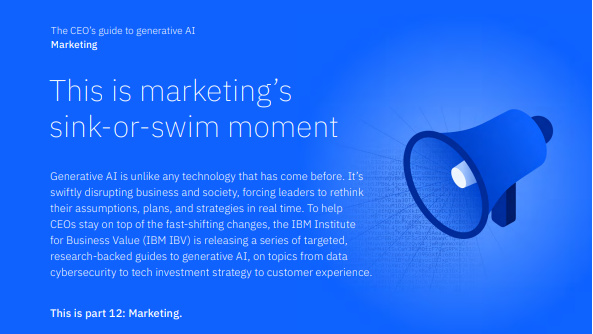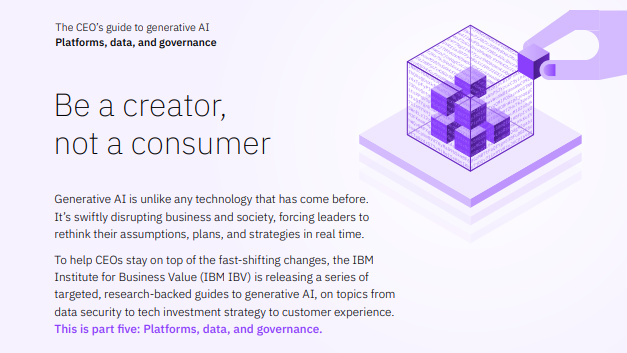How to personalise data while tip-toeing through the data protection minefield
Why data personalisation is important, and why it’s hard to achieve

Having an effective personalised data model is an essential part of modern retail. Highly tailored, unique customer experiences help businesses to get ahead of the competition, and they've also become something that customers have grown to expect. However, there's a definite compromise between offering better personalisation and breaching consumer privacy.
Thanks to online market leaders like Amazon, customers have grown accustomed to personalisation in their online shopping experience. The product recommendations consumers see are no longer suggested because of customers like them; they're tailored because of the information and data on that individual shopper. But delivering this personalisation is becoming harder to achieve
Accessing the right data to deliver these experiences is key. Brands don't want to suffer from delivering out of date or irrelevant personalisation that then negatively affects the customer's opinion of the brand - the complete opposite of what they're trying to achieve.
Similarly, with the pressure from consumers to be data-driven, too much focus is spent on collating new customer data when the focus should also include ensuring existing data is up to date. Marketers then also need to consider how they store this information and make sure they have the right tools to turn the raw data into meaningful insights.
The introduction of GDPR meant a huge change in how businesses were able to collect and use personal data. Marketers understood the importance of data-driven marketing and personalised experiences, but these new regulations meant that any data used incorrectly, or without consent, could result in heavy fines.
RELATED RESOURCE

Marketing departments must bear privacy in mind at every step while they process the data and use it to deliver a personalised experience to their customers. It's a delicate balancing act.
The Data Protection Problem
Data protection regulations are forcing more stringent controls which essentially safeguard how data is collected and used. We've all heard of GDPR, but this regulation isn't alone in fortifying consumer data. Across the pond, the California Consumer Privacy Act (CCPA) sets a marker as to the extent the world's leading capitalist economy is reining in the wild data-methods used by firms to enhance the customer experience.
Get the ITPro daily newsletter
Sign up today and you will receive a free copy of our Future Focus 2025 report - the leading guidance on AI, cybersecurity and other IT challenges as per 700+ senior executives
It's fair to say that across the entire globe there's a real increase in the awareness of data privacy, handing control back to the buyers. But if this comes at a personalisation-cost, negatively impacting the customer experience, why are regulations in place?
Well, because they provide a set of rules that must be followed, guiding both professionals in how they use personal data and telling consumers of their rights. GDPR and other notable regulations don't have to be restrictive, they instead should be viewed as a structure within which to build a personalisation strategy. Data protection's sole aim isn't to make the marketer's job more difficult. Viewed from a certain angle they can even be said to support marketers in their exploits. It's all a matter of perspective.
Making data-protection work for you
The question we have to address is whether personalisation and data privacy can co-exist.
Data is principally collected in three ways:
- Customers can be directly asked whether they consent to their data being collected and utilised.
- Customers can be tracked indirectly.
- Third-party data can be purchased from external sources.
Third-party data is typically the kind most liable to fines, meaning that to avoid the pitfalls of GDPR, organisations may have to lean more heavily towards collecting data directly.
The secret to tip-toeing the data-protection minefield is transparency at every stage of the personalisation journey. Both providers and platforms have to notify users at every turn, which may lead to negative results in the short term at least through a loss of insight from third-party cookies and tracking. In the long term, however, internal data will be strengthened making for a more sustainable practice.
Otherwise, make regulations work for you by using them as an advertising tool. By going above and beyond to demonstrate that you are not only complying with data-protection regulations but putting customers first by introducing policies that further bolster the control they hold over their data, they, in turn, may look more favourably upon you.
But what does this mean for personalisation? Enhancing privacy restrictions by removing cookies, for example, will make it more difficult to optimise spend and deliver targeted messages. Suddenly we degenerate to the 'casting a wide net approach', one that opposes the very principles of personalisation.
Hyper-personalisation
The most important thing to do is to not give up. These are turbulent times for data privacy, but fundamentally customers have become accustomed to familiarity when navigating websites. Foregoing a personalisation strategy will see you slipping behind competitors.
Plotting the route to hyper-personalisation involves working smart with data by being certain of transparency, that customers will not complain about how their data is used, and by extracting maximum insight from lesser volumes.
Hyper-personalisation is consistently conveying the right message without breaking privacy rules. Data should be gleaned from multiple touchpoints and interpreted as part of a sophisticated data-driven marketing strategy to ensure consumers are targeted with only relevant messages likely to encourage interaction. With device-culture, customers may use a laptop, their iPhone, not to mention watches, tablets and desktops. Hyper-personalisation eases communication across each endpoint, ensuring they work together to gather information and provide a complete snapshot of the customer, taking into account lifestyle and online behaviour.
Every customer has specific needs and expectations that they demand are met. Hyper-personalisation is essential to drive more meaningful interactions, upping loyalty and aiding the buyer's journey.
-
 BenQ PD3226G monitor review
BenQ PD3226G monitor reviewReviews This 32-inch monitor aims to provide the best of all possible worlds – 4K resolution, 144Hz refresh rate and pro-class color accuracy – and it mostly succeeds
By Sasha Muller
-
 Layoffs loom for underskilled tech workers and poor performers
Layoffs loom for underskilled tech workers and poor performersNews Tech hiring managers expect to make layoffs in the coming months, with roles ripe for automation and workers with outdated skills the most likely to be cut.
By Emma Woollacott
-
 Empowering enterprises with AI: Entering the era of choice
Empowering enterprises with AI: Entering the era of choicewhitepaper How High Performance Computing (HPC) is making great ideas greater, bringing out their boundless potential, and driving innovation forward
By ITPro
-
 Discover the power of generative AI for banking and financial institutions
Discover the power of generative AI for banking and financial institutionswhitepaper Take the lead and responsibly adopt AI at scale
By ITPro
-
 AI for marketing guidebook
AI for marketing guidebookwhitepaper Marketing in the age of AI
By ITPro
-
 The CEO's guide to generative AI: This is marketing's sink or swim moment
The CEO's guide to generative AI: This is marketing's sink or swim momentWhitepaper Position marketing as the model for generative AI-driven workforce transformation
By ITPro
-
 The CEO's guide to generative AI: Be a creator, not a consumer
The CEO's guide to generative AI: Be a creator, not a consumerWhitepaper Innovate your business model with modern IT architecture, and the principles of trustworthy AI
By ITPro
-
 Learning and operating Presto
Learning and operating Prestowhitepaper Meet your team’s warehouse and lakehouse infrastructure needs
By ITPro
-
 Scale AI workloads: An open data lakehouse approach
Scale AI workloads: An open data lakehouse approachwhitepaper Combine the advantages of data warehouses and data lakes within a new managed cloud service
By ITPro
-
 Managing data for AI and analytics at scale with an Open Data Lakehouse approach
Managing data for AI and analytics at scale with an Open Data Lakehouse approachwhitepaper Discover a fit-for-purpose data store to scale AI workloads
By ITPro